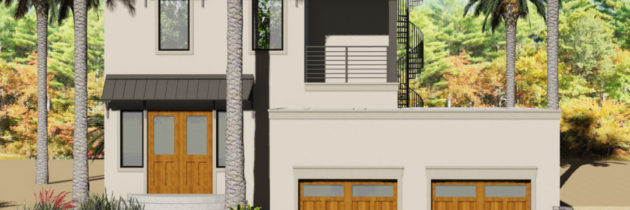Modular Construction is Builder’s First Choice
With the planned 1800 Terry building in Seattle, Kirkland WA-based Seawest Investment Associates is gunning for the first urban high rise project to be awarded a priority green building permit from the Seattle Department of Construction and Inspections. By the numbers, 1800 Terry will feature 38 stories topping out at 440 feet, 424 rental units with floor plans up to 930 square feet per unit, 8,000 square feet of retail space, parking for 259 vehicles and 1,652,148 screws.
It’s the screw count that has Arlan Collins excited. As principal and co-founder of Seattle-based architecture and planning firm CollinsWoerman, Collins calls 1800 Terry a “version three” iteration of the firm’s modular construction vision. The precision in material selection and procurement — down to the last screw — is one of many factors contributing to a project estimated to consume half the energy, generate half the waste and take half the time to build as a comparable, traditionally constructed building.
Utilizing off-site manufacturing facilities, modular construction seeks to prefabricate wall panels and other building components for final assembly on the job site. By placing production in a factory environment, modular building promises more efficient construction, boasting reduced waste and faster builds with smaller teams, all contributing to significant project cost reduction.
“We founded the firm to integrate design with construction to remove waste in the process,” Collins said. “Buildings come in over budget, customers are irate and the structure of the industry is a mess and needs improvement. Where we have repetitive diagrams in place, writing down half of everything in the process was a goal we thought we could attain with modular construction.”
Particularly for asset classes with high repetition in floor plans — think multifamily, hotel and health care projects — modular building is seeing increased investor interest for the cost savings generated by lean production.
Repeatable processes, recyclable buildings
Achieving modular construction’s time and cost-savings requires moving repeatable processes off the job site and into the factory environment. “From a total development cost, including money out, early revenue, decreased material and safety cost, less deliveries, we believe you’ll save between 20% and 30%,” Krulak said. Modular is also quiet. Once the foundation is in, scaffolding assembly is not required and there can be a significant reduction in construction-related noise.
Off-site fabrication also allows multiple building phases to be underway concurrently. As a foundation is being poured or a podium is being built, for example, the rest of the structure can be taking shape in the factory. “It’s a key aspect of the time savings in modular, the ability to lay slab at the same time you are manufacturing the modules, and then you can just drop them right in,” Schwarz said.
Modular capabilities are also advancing to include complex building mechanicals, which could open the door to projects with less repetition in design. For example, Southland Industries is working on projects with modular-built telecom closets and even modular bathrooms.
According to Miller, as long as design specifications are correct and reliable, modular builders have the capacity to approach nearly any project design. “If you know it is going to fit when you get out there, the entire process is easier to control, allowing float in the construction schedule and minimizing crew sizes accordingly,” he said. “It is a concept of production where the guys in the field are becoming expert speed installers rather than being craftsmen.”
Modular builders are also more cost effectively incorporating elements of sustainable design into new construction. The 1800 Terry Building, for example, will include a greywater recycling system and incorporate a vacuum tube for providing roughly 80% of the building’s hot water from solar energy, all at a development cost expected to be 5% lower than similar products without advanced green infrastructure.
For interiors, prefabricated building components literally are modular, as they can be customized to an owner’s needs even as the floor plan changes. “Not only is the prefab solution much faster, but it’s a method where we are striving to build better, reduce waste, use better materials and create construction that is sustainable, as the components can be reused,” Loberg said. “It’s very much a Lego system.”
Still nascent, modular construction is expected to gain traction as projects prove out the promised cost and process efficiencies. Both Full Stack and CollinsWoerman are pursuing just a handful of projects using such systems into 2017.
Southland’s Miller characterizes modular as an emerging technology rather than the latest high-growth industry up-and-comer.
“We’re getting better at maximizing simplistic builds and beating the market,” he said. “Not every investor is progressive and willing to play around with modular, but if you are a repetitive owner, or have built a business around innovation, I can’t think of a better way to go.”
Contact US Modular Home Builders-experts in modular construction in California!
888-987-6638

